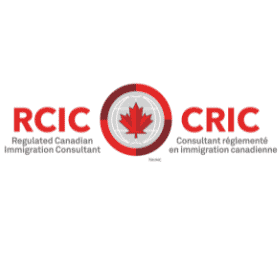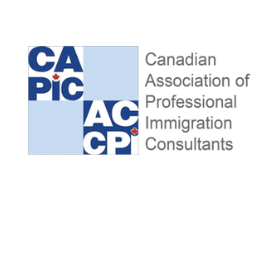One of the world’s leading economies, Canada, provides employment opportunities to numerous talented foreigners every year. Working in Canada means lucrative jobs and fulfilling dreams. You are not authorized to work in Canada until you have a valid Canadian work permit.
Candidates can obtain permanent residence in Canada under Canadian Experience Class (CEC) and Provincial Nominee Program (PNP), once working there legally for a particular time.
Canada operates the Temporary Foreign Worker Program (TFWP) and the International Mobility Program (IMP) to issue work permits to applicants. The difference between the two programs is that TFWP is a Labour Market Impact Assessment (LMIA) based work permit, whereas IMP is a LMIA-exempt work permit.
Canadian employers need to obtain a positive LMIA if they want to recruit a foreign worker. Employment and Social Development Canada (ESDC) issues LMIA to employers if they are able to prove that there is no Canadian citizen or permanent resident to fulfill the position.
The employer has to advertise the job for at least four weeks on three sources for high-wage positions and five sources for low-wage positions. Then interviews are conducted for post. During the processing of the LMIA application, advertisements must be running in any one appropriate source.
Upon the approval of LMIA, applicants submit required documents to Immigration, Refugees and Citizenship Canada (IRCC) and get their work permit.
Documents required for work permit:
-
- A valid passport and other travel documents specified by IRCC
- Completed work permit visa application form
- Qualification certificates
- Proof of work experience such as appointment letter/s, relieving letter/s, promotion letter/s, salary slips, bank statements and letter of reference outlining duration, nature and exact duties of employment,
- Proof showing available funds (until the arrival at the port of entry, as the employer is committed to paying wage rate mentioned on LMIA)
- LMIA/Job offer letter approved by ESDC
- Medical exam certificate
- Marriage certificate and birth certificates, if accompanying family members
- Language test result
- Police clearance certificate
There are two types of Work Permits in Canada
1. Employer-specific work permit
This work permit outlines the following details:
-
- Specific employer
- Duration of the work
- Location of the workplace
- Hourly wage
- Job Title
Requirements to be eligible for an Employer-specific work permit:
-
- No criminal record
- Must not be dealing with any medical issues that may affect the Canadian population
- Must not be dangerous to Canada’s security
- Not going to work for the employer who is listed as ineligible on the list of employers (who do not obey employment conditions)
- Not going to work with an employer who deals with promiscuous services such as erotic dance, massages or erotic services, striptease or related services
- Necessary funds
2. Open work permit:
An open work permit is not LMIA based work permit. The employer, duration of employment, and location are not mentioned. So the applicant can work anywhere in Canada, for any employer.
Requirements to be eligible for an open work permit:
-
- International students graduated from any Canadian Designated Learning Institute (DLI)
- A student who is unable to pay tuition fees
- Applied PR from inside Canada
- A dependent family member of a foreign national who has applied PR (Spouse or common-law partner of a skilled worker or international student)
- Participation in social events such as Working Holidays also proves favorable for some youngsters
Following are two types of open work permits:
-
- Restricted: Worker’s occupation and location of work are restricted in this type.
- Unrestricted: In this type, the workers can work in any occupation and site.
Temporary Foreign Worker Program (TFWP)
TFWP is for foreign employees whose employers must first get an LMIA before issuing a work permit. Following are the streams under this program:
Stream for High wage positions: The salary of temporary foreign worker is same or higher than a provincial or territorial median hourly wage. The initial step in this stream is obtaining a LMIA.
Stream for Low wage positions: The salary of the temporary foreign worker is less than a provincial or territorial median hourly wage. LMIA is the first requirement in this stream also. Companies should be aware that LMIAs for low-wage workers impose certain requirements on employers to protect the working rights and safety of low-wage non-resident workers.
Foreign agricultural worker stream: Employers who need to engage temporary foreign workers for specific agricultural production positions may be able to do so through one of the TFWP agricultural streams. The foreign workers under this stream work on farm primary agriculture activities for 24 months. Temporary workers from any country can work under this program.
- Seasonal Agricultural Worker Program (SAWP): Under this stream, temporary foreign workers from approved countries are hired for seasonal farm-agriculture activities in Canada. The duration of this work permit is 8 months. Participating countries for SAWP are:
- Anguilla
- Antigua and Barbuda
- Barbados
- Dominica
- Grenada
- Jamaica
- Mexico
- Montserrat
- St. Kitts-Nevis
- St. Lucia
- St. Vincent and the Grenadines
- Trinidad and Tobago
Global Talent Stream (GTS): The Canadian government offers the Global Talent Stream to strengthen the country’s economy via Information and Technology industry. The Global Talent Stream is meant to assist creative organizations in attracting the highly specialized and skilled global talent, by allowing them to process applications more quickly and predictably.
Home care provider stream: Foreign caregivers are recruited to provide care to children, senior citizens, and the disabled in private residences.
Families can hire workers on a live-in or live-out basis for the following categories:
Caregivers for children under 18 years of age
Positions under this category are:
-
- Childcare provider
- Live-in caregiver
- Nanny
Caregivers for elderly above 65 years of age
Positions under this category are:
-
- Home support worker
- Live-in caregiver
- Personal care attendant
Caregivers for patients with high medical needs such as disabilities, a chronic or terminal illness
Positions under this category are:
-
- Registered nurses or registered psychiatrist nurses
- Licensed practical nurse
- Attendants for disabled persons
Foreign academic stream: An academic refers to an individual with at least one post-graduate degree and whose prime source of income is teaching or research at universities and colleges. Under this stream, foreign academics are hired in post-secondary institutions in Canada to enhance the nation’s quality of education. Moreover, it enables Canadian research institutions to compete on a worldwide scale.
International Mobility Program (IMP)
IMP allows an employer to appoint a temporary foreign worker without LMIA. They need to pay the employer compliance fee and submit an offer of employment form through the employer portal. Some of the IMP-related (LMIA-exempt) programs are:
Spousal Open Work Permit (SOWP): Spouses of Individuals living in Canada on a valid status such as student, worker or PR holder are eligible for work permit in Canada under this program.
Intra-company transfer program: Employees of multinational corporations situated outside Canada are given the chance to work in Canada, if the company’s parent, subsidiary, branch, or affiliate is located there.
Bridging Open Work Permit (BOWP): Applicants whose PR applications are under process in Canada and their open work permit has expired may apply for this program to extend their work permit visa.
Post Graduation Work Permit (PGWP): Applicants who have studied and graduated from Canadian Designated Learning Institute (DLI) are eligible to obtain a work permit after completing their studies.
International Free Trade Agreements (FTA): Foreign employees invited under these agreements are considered a significant benefit to Canada. International Free Trade Agreements are:
-
- Canada-Korea FTA/ Canada-Peru FTA/ Canada-Columbia FTA/ Canada-Chile FTA
- Canada-European Union Comprehensive Economic and Trade Agreement (CETA)
- Canada-United States-Mexico Agreement (CUSMA)
- Agreement on Trade Continuity between Canada and the United Kingdom of Great Britain and Northern Ireland (CUKTCA)
- General Agreement on Trade in Services (GATS)
- Canada–Panama Free Trade Agreement
- Comprehensive and Progressive Agreement for Trans-Pacific Partnership (CPTPP)
International Exchange Program: Canada participates in a number of international youth exchange programs. The International Experience Canada (IEC), Working Holiday Visa, Student Co-op programs, Young Professionals programs, and teacher exchange programs are all examples of such programs.
Which is the better option, TFWP or IMP?
|
Temporary Foreign Workers Program
|
International Mobility Program |
|
Fulfill temporary labour needs which are unable to find locally inside Canada
|
Enhances Canada’s economic, social and cultural interests
|
|
Labour Market Impact Assessment (LMIA) required
|
Does not need Labour Market Impact Assessment (LMIA)
|
|
The initial step of the employer is to find a worker from Canada
|
Employer is not required to search for a worker in Canada
|
|
Applicants can work under a specific employer, location and time period
|
Foreign nationals may be granted open work permit for a specific time which allows them to work under any employer
|
|
Structured on labour market needs, focusing on occupation and region
|
Structured partially on mutual international agreements such as CUSMA, CETA, NAFTA
|
|
A transition plan is necessary to provide for high-wage occupations
|
Transition plan is not required
|
|
2 steps process: First needs the approval of Employment and Social Development Canada (ESDC), then application is sent to Immigration, Refugees and Citizenship Canada (IRCC)
|
2 steps process: First employer must submit their offer of employment and pay the employer compliance fee through the employer portal; then work permit is applied from Immigration, Refugees and Citizenship Canada (IRCC)
|
Temporary foreign worker program in Quebec
Quebec retains considerable control over its immigration regulations and procedures. As a result, the province has a few policies when it comes to hiring foreign labour. Except for in-home caregiver positions, all LMIA applications must be presented in French. If an employer has trouble complying with this protocol, they should contact Employment and Social Development, Canada (ESDC).
Provincial authorities and federal authorities in Canada must approve the work permit application. Quebec foreign workers are required to obtain a Certificat d’acceptation du Québec (Certificate of Acceptance in Quebec) so that they can work temporarily in Quebec. As LMIA is submitted to ESDC, similarly, CAQ application is submitted to Quebec’s Ministère de l’Immigration, Francisation et de l’Intégration (The Ministry of Immigration, Francisation and Integration).
Can you extend your work permit?
Yes, you can apply for an extension of up to 30 days before your existing work permit expires in Canada. Your work permit cannot be extended beyond the expiration date of your passport. Ensure your passport does not expire before the permit’s selected end date.
How to apply for a work permit?
The application process varies depending on the kind of work permit in Canada. The first step is the selection of appropriate work permit depending on your profile. It is imperative to consult immigration experts before starting the immigration process.
Career Plus Immigration Consultants are known for their excellent services and are always ready to assist you.








